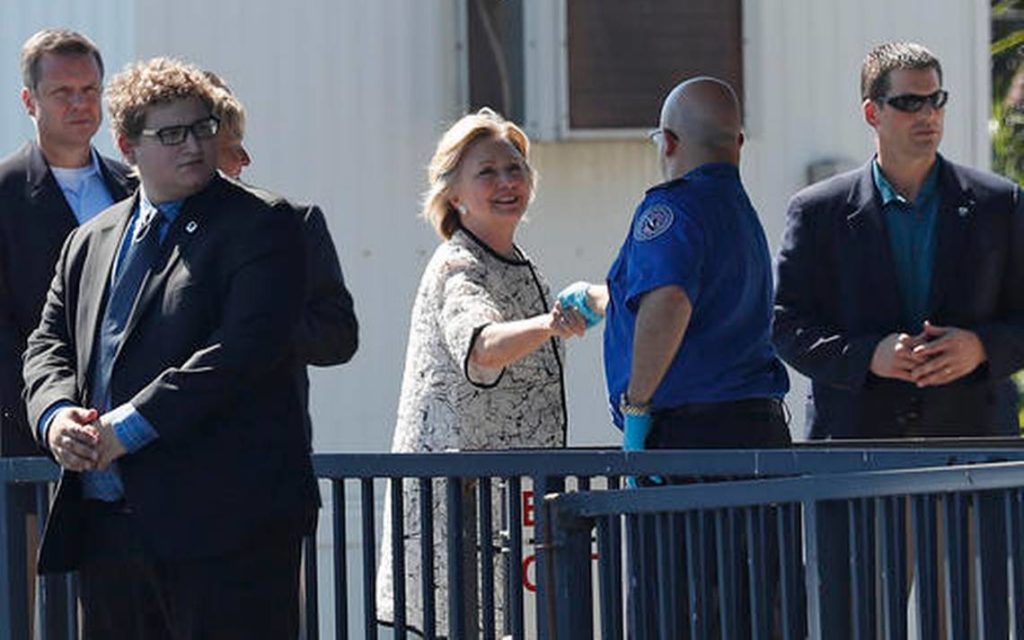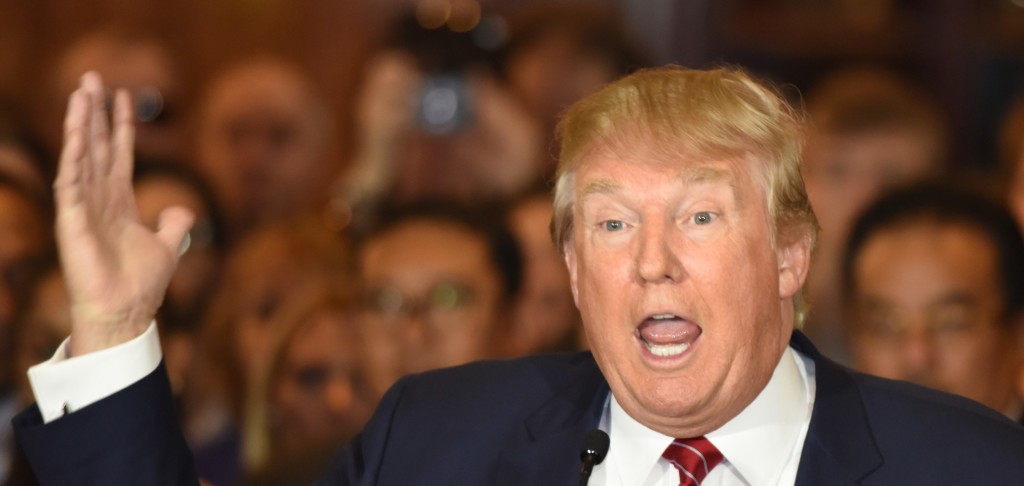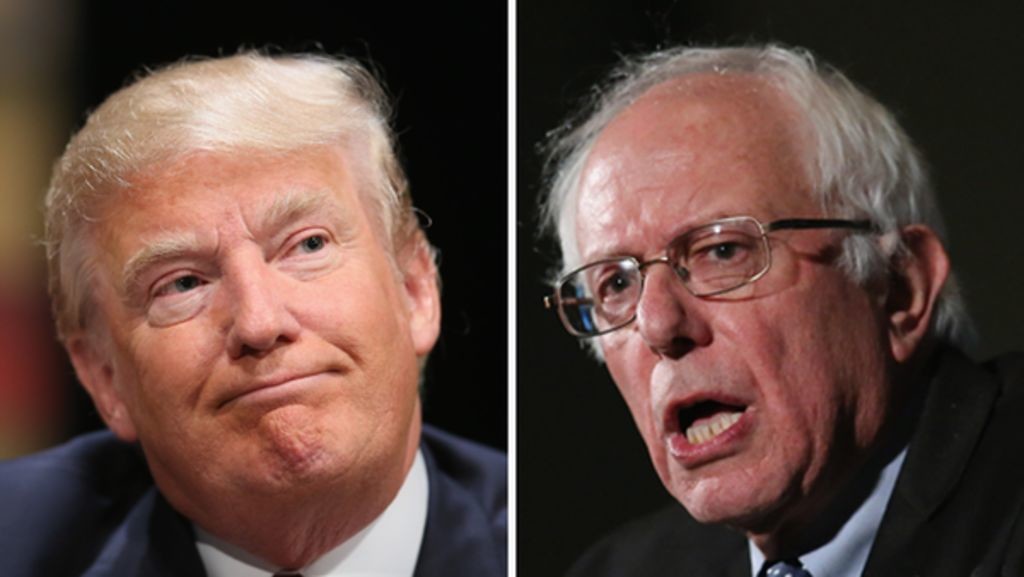As Hillary Clinton asks for money, what she says remains a mystery

It was a very busy, very lucrative weekend for Hillary Clinton in the summer playground of the East Coast’s moneyed elite. She brunched with wealthy backers at a seaside estate in Nantucket, snacking on shrimp dumplings and crab cakes. A few hours later, she and her husband dined with an intimate party of thirty at a secluded Martha’s Vineyard estate. And on Sunday afternoon, she joined the singer Cher at an “LGBT summer celebration” on the far reaches of Cape Cod. By Sunday evening, Clinton had spoken to more than 2,200 campaign donors. But what she told the crowds remains a mystery. Clinton has refused to open her fundraisers to journalists, reversing nearly a decade of greater transparency in presidential campaigns and leaving the public guessing at what she’s saying to some of her most powerful supporters. It’s an approach that differs from the Democratic president she hopes to succeed. Since his 2008 campaign, President Barack Obama has allowed reporters traveling with him into the backyards and homes of wealthy donors to witness his some of his remarks. While reporters are escorted out of Obama’s events before the start of the juicier Q&A, the president’s approach offers at least a limited measure of accountability that some fear may disappear when Clinton or Republican nominee Donald Trump moves into the White House. “Unfortunately these things have a tendency to ratchet down,” said Larry Noble, the general counsel of the nonprofit Campaign Legal Center. “As the bar gets lower, it’s hard to raise it again.” Clinton’s campaign does release limited details about her events, naming the hosts, how many people attended and how much they gave. That’s more than Trump, whose far fewer fundraisers are held entirely away from the media, with no details provided. Even some Democrats privately acknowledge that Clinton’s penchant for secrecy is a liability, given voters continued doubts about her honesty. While Clinton will occasionally take questions from reporters at campaign stops, she has not held a full-fledged news conference in more than 260 days. Trump has held several. She refuses to release the transcripts of dozens of closed-door speeches she delivered to companies and business associations after leaving the State Department, despite significant bipartisan criticism. And since announcing her presidential bid in April 2015, Clinton has held around 300 fundraising events — only around five have been open to any kind of news coverage. “It does feed this rap about being secretive and being suspicious,” said GOP strategist Whit Ayers. Clinton’s aides have promised for weeks that greater access to her events will be coming soon. But Trump’s lack of disclosure has given her political cover to keep the doors closed, particularly as she conducts a period of intense fundraising before the final sprint to Election Day. While Clinton is expected to make only two public appearances before the end of August, she and her top backers will mingle with donors at no fewer than 54 events according to a fundraising schedule obtained by The Associated Press. Reporters covering these events wait outside, in vans, parking lots and vacant guesthouses — even at homes they’ve entered with Obama at previous events. In Provincetown on Sunday, five reporters crowded into the corner of a parking lot, clinging to a chain-link fence as they tried to catch Clinton’s speech to a crowd of about 1,000 supporters. None of her remarks seemed particularly remarkable: The candidate could faintly be heard running through her standard stump speech. During a Saturday fundraiser at a stately Martha’s Vineyard estate, faint cheers could be heard as Clinton addressed 700 donors on a green lawn overlooking the water. Staffers instructed drivers to roll up the windows of the vans where reporters waited before being ushered into a nearby guesthouse. What a candidate tells his or her rich donors has long been a subject of intense speculation in American politics, in part because the message can be different from what they offer to voters. Obama is still haunted by a comment he made at a 2008 fundraiser in San Francisco, calling voters in small town Pennsylvania “bitter” and saying they cling to “guns or religion.” He learned a lesson: At events during his 2012 campaign, staffers set up a table where guests were expected to check their cellphones before entering. Clinton has tried to ban tweeting, Instagram and other forms of social media at some of her events. Four years ago, a waiter recorded and leaked remarks GOP nominee Mitt Romney made about the “47 percent” of voters who are “dependent on government and would vote for Obama “no matter what” at a closed Florida fundraiser. After his convention, Romney started opening his fundraisers to the media to grab headlines, especially on days when he had no other public appearances. His former aides say that’s not a problem for Clinton. “Quite frankly, if I’m her, it may not be a bad thing to let Donald Trump be the only candidate making news on any given day,” said former Romney campaign aide Ryan Williams. “She can stay dark for five straight days and let Trump trip all over himself.” ___ Keep track of how much Clinton and Trump are spending on television advertising, and where they’re spending it, via AP’s interactive ad tracker https://elections.ap.org/content/ad-spending. Republished with permission of The Associated Press.
Darryl Paulson: Candidate’s running mate rarely affects outcome of presidential election

The national conventions are less than three months away and, as the nomination phase comes to a close, attention will gravitate toward potential vice presidential candidates. Let’s focus on the factors that have been used in selecting vice presidents. Most conventional wisdom is wrong. To begin with, most people and many presidential candidates select a vice president who they believe will help them win the election. Few vice presidents have had any effect on the election results. Jack Kemp did not help carry his home state for Bob Dole and Paul Ryan did not win Wisconsin for Mitt Romney. On the Democratic side, Sen. Lloyd Bentsen was not able to carry Texas for Michael Dukakis, nor did John Edwards help the Democrats win South Carolina or other southern states. One of the few times a vice president actually helped a president carry a state was in 1960 when John F. Kennedy picked Sen. Lyndon Johnson as his running mate. If Kennedy had not won Texas, Richard Nixon would have won the presidency. In like fashion, vice presidents are sometimes selected to provide regional balance, although there is no evidence that this helps. When Bill Clinton of Arkansas picked fellow southerner Al Gore as his vice president, many thought this unbalanced regional ticket was crazy. When the Clinton-Gore team captured the electoral vote of four southern states, something that Democrats had been unable to do in recent presidential elections, Clinton’s choice looked like genius. In addition to regional balance, vice presidents are sometimes selected to provide ideological balance. With increased polarization in recent years, this is becoming a less important factor. In 1976, Ronald Reagan announced Sen. Richard Schweiker of Pennsylvania as his vice presidential choice prior to the convention. Reagan hoped to alleviate the fears of some that he was too conservative and needed a moderate to balance the ticket. More importantly, Reagan hoped that picking Schweiker would convince some Pennsylvania delegates to support his candidacy over incumbent Gerald Ford. The pick of Schweiker did not help Reagan and Ford went on to win the nomination. Many Democrats in 2016 see Hillary Clinton as too conservative and too establishment and have urged her to choose a progressive as vice president. In addition to Bernie Sanders, other progressive names being floated are Sen. Sherrod Brown of Ohio and Sen. Elizabeth Warren of Massachusetts. A vice president is sometimes selected to stimulate participation by a particular group. Walter Mondale selected Geraldine Ferraro to get more women to vote. That pick didn’t provide much help. Mondale won only his home state of Minnesota and the District of Columbia against Reagan. Vice presidents have been picked to add gravitas to the ticket. Concerns about Reagan’s limited government experience led him to pick George Herbert Walker Bush as his vice president. Bush had been a member of Congress, the U.S. ambassador to the United Nations and to China, head of the Republican National Committee and head of the CIA prior to his selection. Bush’s son, George W., picked Dick Cheney as his vice president to add heft to his ticket. Cheney had served as Chief-of-Staff to Ford, been a member of the House, and served as Secretary of Defense for George W’s father. In fact, Cheney headed George W’s vice presidential selection team and concluded he was the best candidate. Do any of these factors help a presidential candidate win? The answer is no. A study by two political scientists, Bernard Grofman and Reuben Kline, analyzed 11 presidential elections between 1968 and 2008 and found the net effect of a vice president was 1 percent at most. If Clinton is the Democratic nominee, she may pick a progressive or choose someone like Secretary of Housing and Urban Development Julian Castro. Although not well known, Castro’s youth and Hispanic background might help stimulate Hispanic turnout. If Trump is the GOP nominee, it is easier to put together a list of people he would not select than those he would. There is little chance that “lying Ted,” “little Marco,” or “low energy Bush” would want to join forces with Trump. Gov. Scott Walker of Wisconsin is one possibility since he dropped out of the nomination race early before Trump had the opportunity to insult him. Chris Christie is another option because he was the first major candidate to endorse Trump after Christie withdrew. Another option is Florida Gov. Rick Scott. Florida is a “must win” state and Scott endorsed Trump as a “businessman outsider who will shake up the status quo in Washington.” Although most of the factors in the vice presidential selection process have been shown to have little impact, there are two general rules that no president should ignore. First, pick someone you feel comfortable working with. Second, and most important, pick someone who is ready to be president. Nothing else matters. *** Darryl Paulson is Professor Emeritus of Government at USF St. Petersburg.
Adam Goodman: Donald Trump, Bernie Sanders are the ‘New American Transformers’

There’s a new reality show in America generating ratings and rave reviews before an audience that had been waiting a long time for it to begin. It’s called “The New American Transformers,” but unlike the “Transformer” movies this series does not revolve around a galactic battle but something much more down to Earth. It is a story about Americans looking to transform a system that’s broken, in a country that’s lost its way, led by politicians who’ve become more interested in self-preservation than national revival. The search for newness, freshness, and a jolt of confidence explains why both Donald Trump and Bernie Sanders, hailing from wholly different universes of ideology and temperament, whether they win or lose, are scoring big today. Both are armed with declarations of transformation, from policy and politics, to America’s relations around the world. Sensing our system is progressively collapsing under its own weight, Trump and Sanders have come to embrace this truth. To their credit, the American people have as well. Trump and Sanders, separate yet together, have lent voice to what we’re feeling. Separate, yet together, Trump and Sanders rejected canned political hyperbole in favor of spontaneous declarations, in the moment and for the moment. Separate, yet together, they command the stage, despite doubts about their electability, despite the establishment’s desperate attempts to explain it away, or wish it away. After all, how do you stop a movement? How do you slow the momentum of candidates who simply refuse to play by the normal rules of the game? Trump and Sanders are not programmed by advisers, manipulated by donors, or controlled by polls. They’re refreshingly real, dependably candid, and totally human. Do they mess up at times, driving the pundits and prognosticators nuts? Yes. Do they sometimes fumble when asked to fully explain their remedies? Yes. Yet, Americans today are more interested in the honesty of intent, than the dishonesty of promises never pursued. After a Versailles–like ceremony where Dr. Ben Carson blessed the Trump insurgency with an outsider’s hug, The Donald says, “I try to be who I am.” Bernie Sanders, in denouncing the system amid a throng of believers, says “there’s too much shouting at each other; too much making fun of each other.” Now anyone who’s ever run for office, and those like me who have served them, understand all voting is emotional. We are not robots. We vote our feelings. Psychiatrists liken this to falling in love, a kind of inexplicable madness that while not always rational, is overwhelmingly emotional. Consciously or not, Trump and Sanders are wooing America, without the varnish of prepared speeches, without the crutch of poll-driven drivel, without permission from the establishment or the media elites. That same establishment is now out to stop them, at all costs, and they’ve settled on their choice of weapon: the negative ad. When an establishment candidate can’t sell himself or herself, their strategy is to air negative ads against everyone else. When the audience is not buying the establishment’s pick, they are made to feel stupid, uninformed, manipulated by ignorance. Yet this conventional dismantling of candidates is falling on hard times, outmatched by Sanders’ and Trump’s panache in made-for-television rallies built from enthusiasm and bred from frustration. Here are three reasons why. One. People don’t form impressions of candidates from negative ads, especially when the source is self-serving, the claims are questionable, and the intent is malicious. Two. After the Supreme Court’s Citizens United decision opened the floodgates on negative ads, funded by outside groups with outside interests, they’re not unique anymore. Three. When any voter bonds with a candidate, that voter resents anyone who stands in the way of that relationship. No wonder Trump and Sanders are transforming the face of politics. In their world, it’s us versus them. In parallel, they have challenged party rules that preserve the interests of insiders, while challenging Americans to feel empowered again. Together, they have given us a choice: accept mediocrity in our domestic and foreign affairs, or expect excellence from themselves, and the nation. Together, they represent the agony and optimism of the American people. Given that choice, Michigan and Colorado Democrats sided with Sanders. Given that choice, Mississippi and Massachusetts Republicans flocked to Trump. By exercising that choice, the American people have begun to feel something the system long ago took for granted: hope. Meet the “New Transformers” — Sanders and Trump. Meet the new America, where democracy is alive, and well. *** Adam Goodman, a national GOP media consultant based in Florida, has created, directed and produced media for more than 300 candidates in 46 states over the past 35 years.


